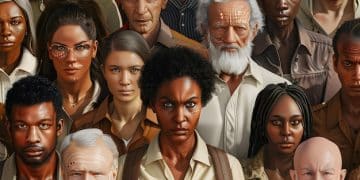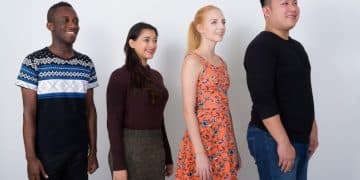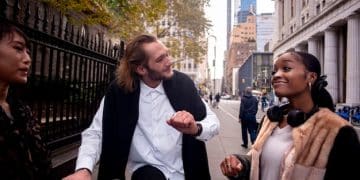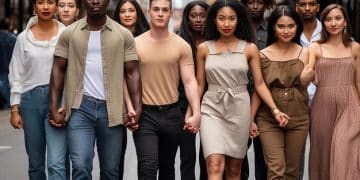Shifting Demographics: Reshaping American Cultural Identity by 2025
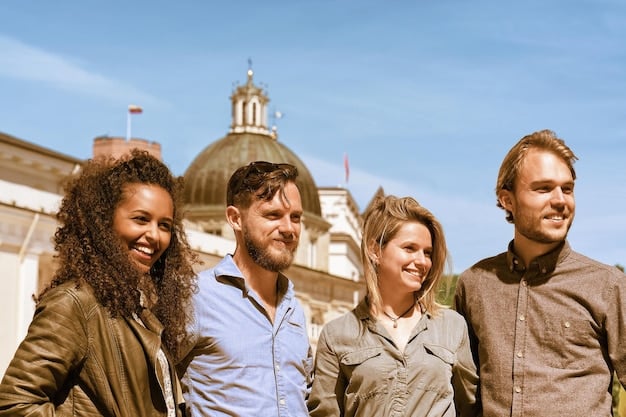
Shifting demographics in the United States, characterized by increasing racial and ethnic diversity, an aging population, and changing family structures, are significantly reshaping American cultural identity by 2025, impacting everything from social norms and values to political landscapes and economic structures.
The United States has always been a melting pot, but the ingredients are changing. By 2025, shifting demographics will have a profound impact on American culture. Let’s explore how shifting demographics are reshaping American cultural identity by 2025, examining the key trends and their implications for the future.
Understanding the Demographic Shifts in America
The US population is undergoing significant changes. These shifts are not just about numbers; they represent fundamental transformations in the composition of American society. Understanding these trends is crucial for anticipating their cultural impact.
Increasing Racial and Ethnic Diversity
The United States is becoming more diverse, with racial and ethnic minorities growing at a faster rate than the white population. This increasing diversity is reshaping cultural norms and values, as different groups bring their unique perspectives and traditions to the forefront.
Aging Population
The baby boomer generation is aging, leading to a larger proportion of older adults in the population. This demographic shift has implications for healthcare, social security, and retirement, as well as for cultural attitudes towards aging and intergenerational relationships.
- Increased demand for healthcare services and elder care.
- Potential strain on social security and retirement systems.
- Shifting cultural attitudes towards aging and retirement.
- Growing interest in intergenerational activities and living arrangements.
These demographic shifts are not isolated events; they are interconnected and influence one another. For example, increasing racial and ethnic diversity can impact the cultural values and norms of aging populations, while an aging population can influence the demand for culturally diverse products and services.
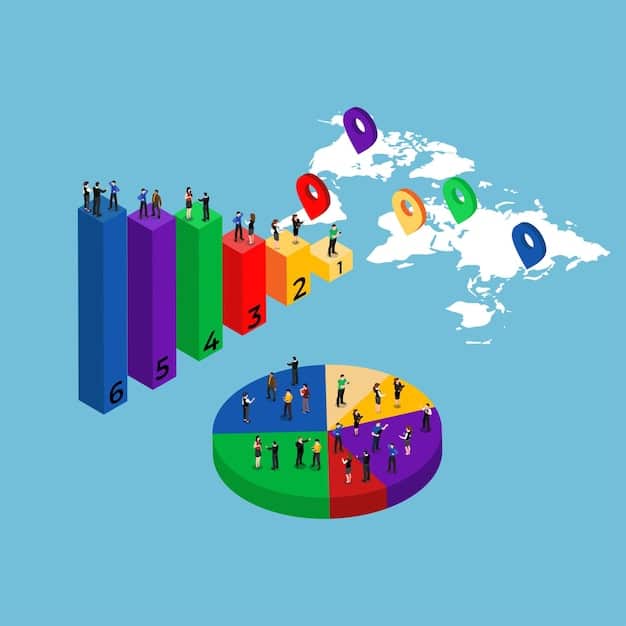
The Impact on Social Norms and Values
Demographic shifts are directly influencing social norms, values, and cultural practices. As different groups interact and integrate, traditional norms and values are being challenged and redefined. This process can lead to both progress and tension.
Changing Family Structures
Traditional family structures are evolving, with more single-parent households, blended families, and same-sex couples. These changes are reshaping cultural attitudes towards marriage, parenting, and family roles. Inclusive representation in media and policy is becoming increasingly important.
Evolving Gender Roles
Gender roles are becoming more fluid and inclusive, with increasing acceptance of LGBTQ+ individuals and greater gender equality. These changes are challenging traditional notions of masculinity and femininity, and promoting a more diverse and inclusive understanding of gender identity and expression.
This evolution is not without its challenges. Differences in values can sometimes lead to cultural clashes. However, these clashes can also be opportunities for growth and understanding, as different groups learn to appreciate and respect one another’s perspectives.
Political and Economic Transformations
Demographic changes are also driving political and economic transformations. As the population shifts, so too does the balance of power in political arenas. Similarly, the economy is adapting to meet the needs and demands of a more diverse consumer base.
Shifting Political Landscape
The growing influence of minority groups is reshaping the political landscape, with increasing representation in government and greater emphasis on issues that affect these communities. Political parties are adapting their platforms and strategies to appeal to a more diverse electorate.
Economic Adaptation
Businesses are recognizing the importance of diversity and inclusion in the workplace and the marketplace. Companies are adapting their products, services, and marketing strategies to appeal to a more diverse consumer base, and are prioritizing diversity and inclusion in their hiring and promotion practices.
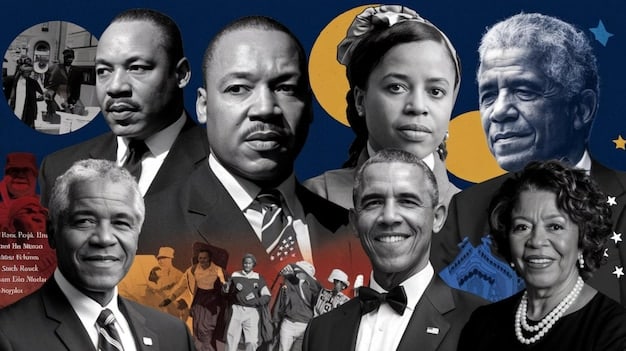
- Increased investment in minority-owned businesses and communities.
- Development of culturally relevant products and services.
- Implementation of diversity and inclusion initiatives in the workplace.
- Support for policies that promote economic equity and opportunity.
These transformations are creating new opportunities and challenges for businesses and policymakers alike. Companies that embrace diversity and inclusion are likely to thrive in the changing economic landscape, while those that fail to adapt may fall behind.
The Role of Technology and Media
Technology and media play a critical role in shaping and reflecting cultural identity. These tools can be powerful forces for both cultural exchange and cultural fragmentation, depending on how they are used.
Digital Connectivity
The internet and social media are connecting people from different backgrounds and cultures, facilitating cultural exchange and promoting a more globalized understanding of identity. Digital platforms are also providing opportunities for minority groups to share their stories and perspectives with a wider audience.
Media Representation
Media representation of diversity and inclusion is becoming increasingly important, as audiences demand more authentic and nuanced portrayals of different communities. Inclusive media representation can help to challenge stereotypes, promote understanding, and foster a more inclusive cultural environment.
However, technology and media can also exacerbate cultural divisions if they are used to promote misinformation, stereotypes, or hate speech. It is important to use these tools responsibly and to promote media literacy and critical thinking skills.
Education and Cultural Preservation
Education and cultural preservation are vital for maintaining cultural heritage while adapting to demographic shifts. Promoting multicultural education and preserving cultural traditions can help to foster a sense of belonging and identity among diverse populations.
Multicultural Education
Multicultural education promotes understanding and appreciation of different cultures, helping to bridge cultural divides and foster a more inclusive society. Introducing diverse perspectives and histories into the curriculum can enhance empathy and respect among students.
Preservation of Cultural Traditions
Efforts to preserve cultural traditions, such as language, arts, and customs, can help maintain cultural identity and provide a sense of continuity with the past. Cultural centers, museums, and community events play a crucial role in preserving and promoting cultural heritage.
- Supporting cultural centers and museums that showcase diverse cultures.
- Organizing community events that celebrate cultural traditions.
- Providing language classes and cultural workshops.
- Encouraging intergenerational transmission of cultural knowledge.
These efforts can ensure that cultural diversity is both celebrated and sustained, fostering a society where people feel connected to their roots while embracing new cultural influences.
Challenges and Opportunities Ahead
The demographic shifts in America present both challenges and opportunities. Addressing these challenges and capitalizing on the opportunities will require proactive strategies and inclusive policies.
Addressing Cultural Divides
One of the biggest challenges is addressing cultural divides and promoting social cohesion. Initiatives that encourage intergroup dialogue, community engagement, and cross-cultural understanding can help to bridge these divides and build a more unified society.
Promoting Inclusive Policies
Inclusive policies that address systemic inequities and promote equal opportunity are essential for ensuring that all members of society can thrive. This includes policies related to education, healthcare, employment, and housing, among others.
By addressing these challenges and embracing the opportunities presented by demographic shifts, America can create a more equitable and inclusive society for all. This requires a commitment to diversity, equity, and inclusion at all levels of society, from individuals and communities to businesses and government.
| Key Aspect | Brief Description |
|---|---|
| 🙌 Increasing Diversity | US is becoming more racially and ethnically diverse. |
| 👴 Aging Population | The population is aging, impacting healthcare and social security. |
| 🗳️ Political Shifts | Minority groups are gaining political influence. |
| 🌐 Technology’s Role | Tech and media shape cultural exchanges and representation. |
Frequently Asked Questions
▼
The US is seeing a rise in racial and ethnic minorities, driven by higher birth rates in these groups and increasing immigration, which diversifies the cultural landscape.
▼
An aging population increases the demand for healthcare services and retirement benefits, potentially straining social security and necessitating cultural adaptations.
▼
Traditional family structures are evolving to include more single-parent homes, blended families, and same-sex partnerships, influencing societal norms.
▼
Media representation helps shape perceptions and acceptance of diverse cultures, challenging stereotypes and promoting inclusivity in society.
▼
Education fosters understanding and appreciation of different cultures through multicultural curricula and preservation of cultural traditions, ensuring a cohesive society.
Conclusion
As 2025 approaches, the demographic shifts in America continue to reshape its cultural identity. Understanding and embracing these changes is crucial for creating a more inclusive and equitable society, where diverse voices are heard, and all members have the opportunity to thrive.
